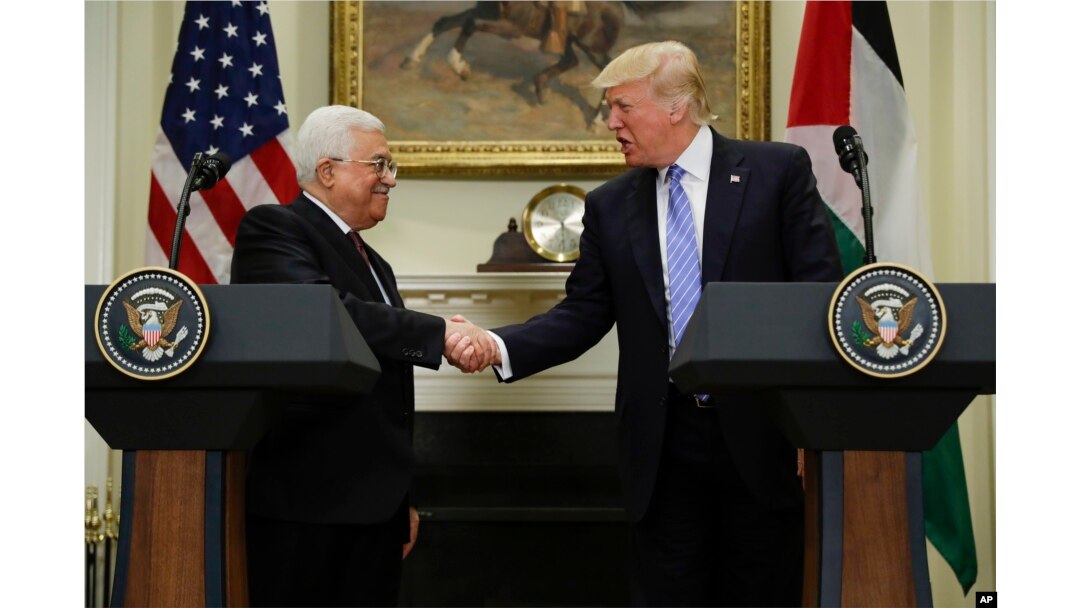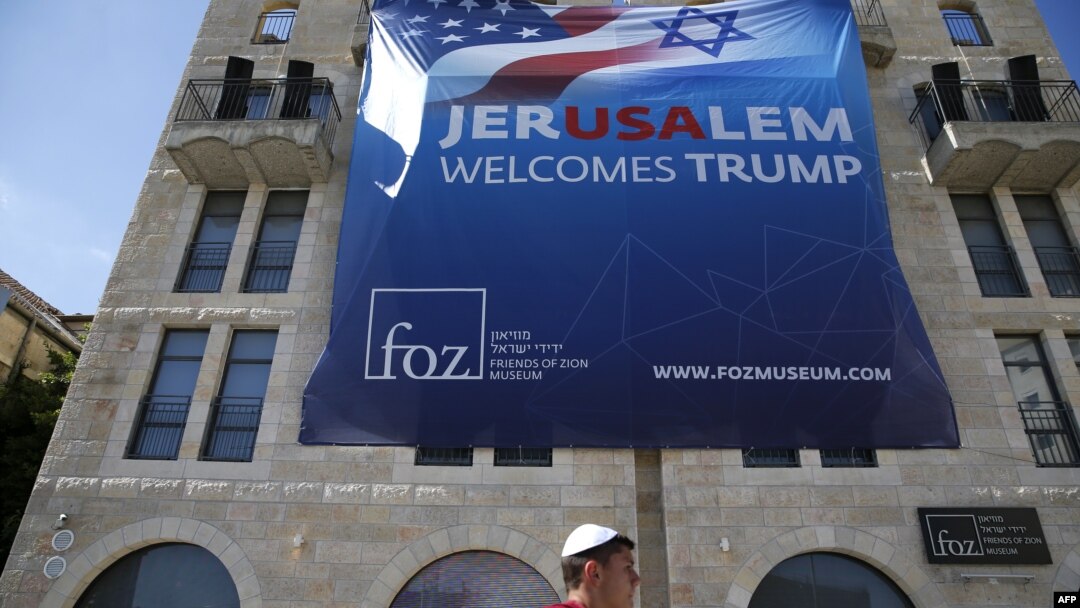President Donald Trump is wasting no time trying to succeed where his predecessors have failed. He will visit Israel and the Palestinian territories on Monday and Tuesday of next week, hoping to revive peace talks that collapsed three years ago. His goal is what he calls “the ultimate deal” that would bring an elusive peace to the Holy Land.
Both sides are preparing to roll out the red carpet, Israel in Jerusalem and the Palestinians in the biblical West Bank town of Bethlehem which is under limited self-rule.
“The President will be warmly welcomed here as a great friend of Israel and as is customary for the leader of our greatest ally, the United States,” Israeli Prime Minister Benjamin Netanyahu told his Cabinet. “The president is seeking to examine ways of renewing the peace process with the Palestinians. I share in this desire as do the citizens of Israel. We want peace.”
Netanyahu says he is ready to resume negotiations without preconditions, but Abbas insists that there must be an end-game. “Our strategic and sole option is to achieve the two-state solution, the state of Palestine with East Jerusalem as its capital to live side by side in peace, safety and stability together with the state of Israel along the 1967 borders,” Abbas said at a White House meeting with Trump in early May.

President Donald Trump shakes hands with Palestinian leader Mahmoud Abbas after their statements in the Roosevelt Room of the White House in Washington, May 3, 2017.
That is a simple statement but it encapsulates the deeply complex issues of the conflict. While Netanyahu publicly endorses the idea of creating a Palestinian state, it’s well known that he doesn’t really like the idea for security reasons as well as Jewish historical and biblical ties to the disputed West Bank. He rejects the 1967 borders as indefensible and says that Israeli sovereignty over its “eternal capital” Jerusalem, including the Old City with its Jewish, Muslim and Christian holy places, is not negotiable.
Israel captured the Old City, the West Bank and Gaza Strip during the Six Day War in 1967 and it annexed East Jerusalem shortly afterward.
Highlighting the tightrope on which Trump will be walking is his planned visit to the Western Wall, the first by an American president to Judaism’s holiest site in the Old City.
When Netanyahu asked if he could accompany the president, a U.S. diplomat told the Israelis that the site is in the West Bank and is “not your territory.” Israeli officials were furious and demanded an explanation from the White House, which later clarified that the diplomat’s comments do not reflect official policy.
FILE - Israeli Prime Minister Benjamin Netanyahu attends the weekly cabinet meeting at his office in Jerusalem.
In addition to the charged question of the status of Jerusalem, the other so-called “final status” issues are just as thorny: Jewish settlements, Palestinian refugees and final borders. Trump is not intimidated by these obstacles that have blocked the efforts of the world’s top diplomats for decades.
“We want to create peace between Israel and the Palestinians,” he said. “We will get it done…It is something that I think is frankly, maybe, not as difficult as people have thought over the years.”
Comments like that have many observers concluding that Trump, a businessman who sees himself as a dealmaker but has little experience in international diplomacy, is simply naïve.
“At the end of the day this is not a question of technique or process,” says Zalman Shoval, a former Israeli ambassador to the United States. “It’s a much deeper issue of two peoples who lay claim to the same small piece of land...So I don’t think it’s a question of being a business person or not being a business person, [but rather], one has to very thoroughly learn the deeper issues at hand.”
The Palestinians don’t know what to expect because Trump has not yet endorsed the bedrock of U.S. Middle East diplomacy since the Oslo (peace) Accords of 1993, namely, the two-state solution. “I'm looking at two-state and one-state, and I like the one that both parties like,” Trump said at a White House news conference with Netanyahu in February. “If Israel and the Palestinians are happy, I'm happy with the one they like the best.”
That stunned the Palestinians but delighted Netanyahu, who heads a right-wing coalition with pro-settler parties that strongly oppose a Palestinian state. Israeli nationalists say a Palestinian “terror” state already exists in the Gaza Strip, from where Israel evacuated all soldiers and settlers in a unilateral withdrawal in 2005. Two years later, the Islamic militant group Hamas seized control of the territory and has since fired thousands of rockets across the border at Israel.
But with “a new sheriff in town,” as Nikki Haley, the U.S. Ambassador to the U.N., put it, both the Israelis and Palestinians want to give the new administration a chance. While the probability of the “ultimate deal” seems as slim as ever, Trump will begin with the more achievable first step that his predecessors took: trying to goad the parties back to the negotiating table.


